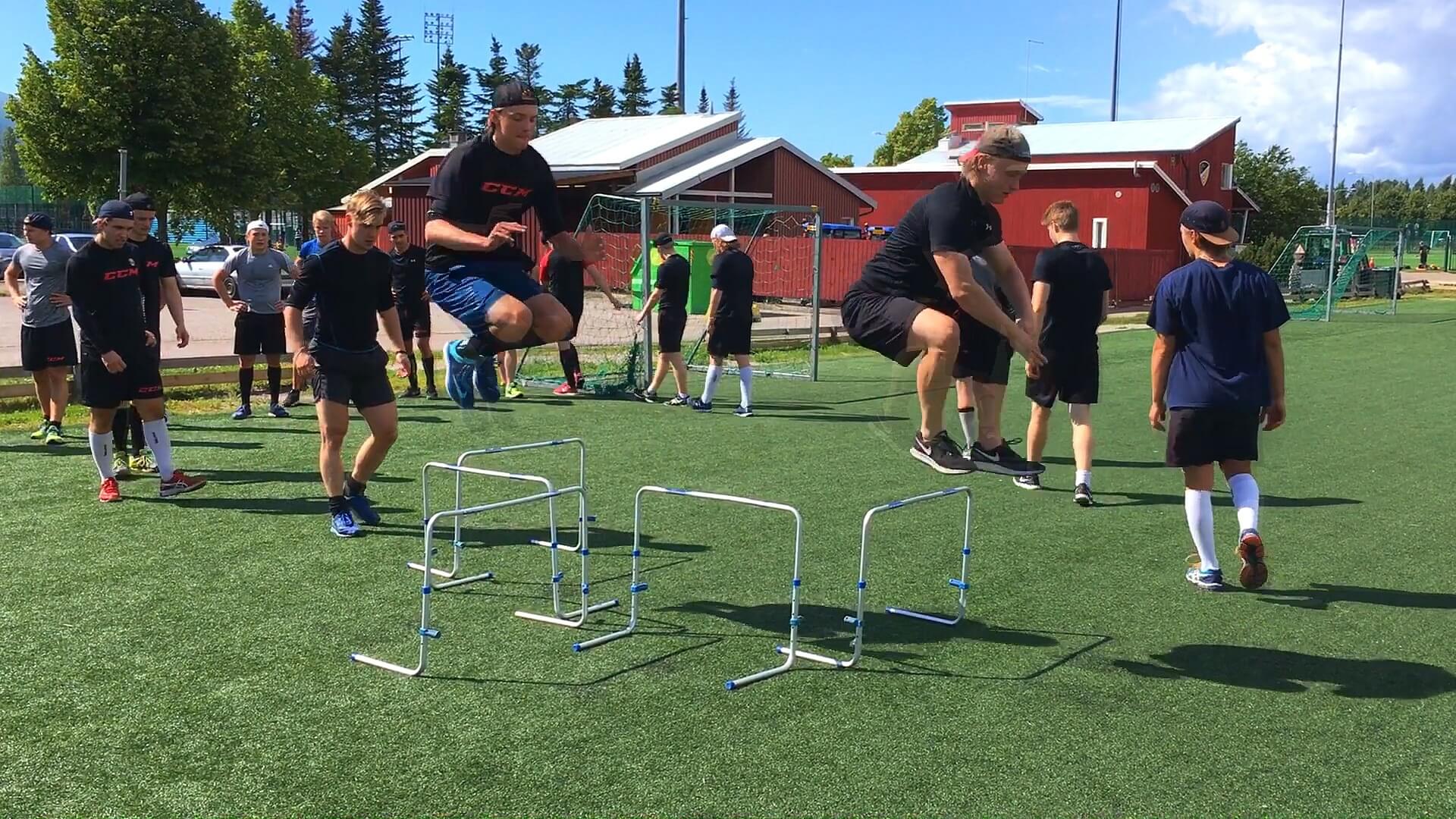How to Use Jumps to Improve Skating Power and Acceleration
Reader Greg Riley chimes in with a question:
===
"Hey Yunus
I just bought 2.0.
Thanks
Can you recommend a box jump depth jump routine to increase skating power and acceleration?"
===
The training programs in Next Level Hockey Training 2.0 contain several jump variations, including depth jumps.
If you’re looking for a separate jump routine in addition to that, you should remember a few things before we can talk about programming.
* Start with low-level variations such as box, broad and vertical jumps until proper take-off and landing mechanics become second nature.
* Once that’s taken care of, every rep should be explosive. The goal here is not to bob up and down quickly like Jenna Jameson in her prime. You want to generate maximum force.
So, with a vertical jump, you’d try to put as much distance between your feet and the ground as possible. Jump right through the roof.
This is not a difficult concept to grasp but sometimes athletes need to be reminded of such things instead of having them go through the motions with 90% of effort, and thus not getting a desired training effect.
* Jumping, especially for more advanced athletes using more advanced methods, is highly taxing neurally.
Any time you see a "plyometrics" workout with short rest periods and/or higher reps (let’s draw the line at 6+ reps per set), turn around and run in the other direction. You won’t gain an iota of explosiveness following such nonsense.
In fact, sprinting to get the hell away from it will do more for your first step quickness than what this so called "plyo program" ever could.
With that general disclaimer out of the way, let’s look at how to construct your jump sessions.
A good rule of thumb to follow is to perform up to three jump exercises for 3-6 sets of 3-5 reps per workout, 1-3 times per week.
In most cases, I like to combine both single- and double-leg jump variations performed in a linear/lateral/vertical fashion in one session.
If you only do jumps one day per week, here’s what this could look like:
1) Double Leg Linear – Depth Jump Over Hurdle
Week 1 – 3 x 5
Week 2 – 4 x 5
Week 3 – 5 x 5
2) Single Leg Lateral – Diagonal Bound
Week 1 – 3 x 3 per leg
Week 2 – 4 x 3 per leg
Week 3 – 5 x 3 per leg
In a twice weekly scenario, I like to use one linear/vertical exercise and one lateral exercise per workout. Example:
Day 1
1) Double Leg Linear – Hurdle Jump 3-5 x 3-5
2) Single Leg Lateral – 1-Leg Medial + Lateral Low Hurdle Hop 3-5 x 3 per leg
Day 2
1) Single Leg Linear – 1-Leg Hurdle Hop 3-5 x 5
2) Single Leg Lateral – Lateral Bound 3-5 x 3 per leg
With my advanced athletes, we do lots of reactive jumping in multiple directions and also include rotational jumps. A 2x per week example:
Day 1
1) Double Leg Lateral – 4-Way Hurdle Jump 3-5 x 5
2) Single Leg Rotational – Repeat 90 Degree Bound 3-5 x 2 per leg
Day 2
1) Double Leg Linear - Depth Jump to Hurdle Jump to Broad Jump 4-6 x 1
2) Double Leg Rotational - 90 Degree Hurdle Jump to Vertical Jump 3-5 x 2
You can also combine a jump variation with sprints, which opens up a whole slew of possibilities regarding power and acceleration training. A few examples:
* Linear Hurdle Jump to 10-20m Sprint
* Lateral Hurdle Jump to 10-20m Sprint
* Lateral Bound to 10-20m Sprint
* Depth Jump to 10-20m Sprint
And I haven’t even mentioned resisted jumps using a straight or trap bar, dumbbells, or resistance bands yet. So the variations become endless.
However, at the end of the day, jump training doesn’t need to be complicated.
Follow a low volume, moderate frequency approach with appropriate work-to-rest ratios, and you’ve already won the half the battle.
The rest is simply including suitable exercises that challenge your body in a linear, vertical, lateral and rotational fashion.
Good luck.
For a strength program that perfectly complements your jump training to improve skating power and acceleration, hop over to:
If you enjoyed this article, please do a brother a favor by liking, commenting and sharing it with others who might dig it as well.
Thanks!
Get the Next Level Hockey Training System Now!
60 weeks of proven off-ice hockey training programs designed to get you brutally strong and powerful!

